MIT journalism director recognizes trust issues
In an age where trust in media, politics and science seems to be dying, journalists and scientists from Fresno and beyond are working together to reverse this trend. Several journalists and a Fresno State science professor convened for a seminar hosted by the Fresno State Institute for Media and Public Trust on the topic of growing distrust in science journalism, April 9.
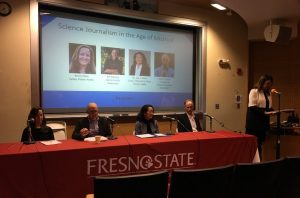
Local community members gathered in the Peters Education Center Auditorium to hear from keynote speaker Deborah Blum, a former environmental science writer for The Fresno Bee who now directs the Knight Science Journalism program at MIT.
Blum was followed by a panel made up of four people: Kerry Klein, Valley Public Radio host, Mark Grossi, freelance environmental journalist, Bill Manny, Idaho Statesman, and Dr. Joy J. Goto, the chair of Fresno State’s chemistry department.
Following Director of the Institute for Media and Public Trust Jim Boren’s introduction, Blum launched into her presentation where she explored and analyzed varying patterns of mistrust.
After graduating from college, Blum became the first ever science reporter for The Fresno Bee, and while in Fresno, took a couple classes at Fresno State. Returning as a keynote speaker, Blum highlighted a few reasons she believes trust in science journalism is shaken.
“Journalism has always had what I think of as a ‘shoot the messenger problem,’ and a lot of what people call fake news, are just stories they don’t want to hear,” Blum said. “It’s an easy label to try to make a story that you don’t like go away. So I think we have to, as journalists, try to address that and re-establish ourselves in some ways, as a credible source of the news.
She notes that the problem of mistrust does not only lie with journalists, but with science as well.
“One of the other interesting problems is that there’s also continual mistrust in science itself,” Blum said. “For instance, if I take something like the anti-vaccine movement, every doctor I know stands up and says vaccines matter. They’re safe, they protect your children and they protect you. But people dismiss that. So it’s not just a problem with journalism, but it’s a question of the institutional science that we cover.”
Blum recognizes that science is not uncomplicated, but believes it is a fascinating and complex human inquiry into how the world works.
“As science journalists, it’s our job to show you science in all its complexity and in all of its dark and light,” Blum said. “It’s our job to give the tools that will allow you to navigate the world of science and technology, from artificial intelligence, to environmental issues, to health issues.
“Science journalism is so important because the most powerful force in the world today is science and technology,” Blum continued. “It’s transformative and it’s changing the world in all kinds of ways, even now that we don’t fully appreciate. If we don’t give people those tools to know how to navigate this science and technology-altered world and to figure out how to make common senses about how to live their lives, we let everyone down.”
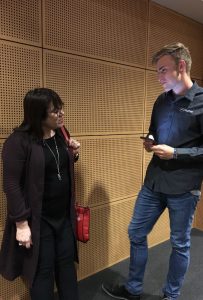
However, the disconnect occurs because of the complexity of science, and the imperfect nature of man. Blum offered statistics from the Pew Research Center that showed merely 24% of people have a great deal of trust in doctors while only 21% shared the same level of trust in scientists.
“But there’s reasons then why people don’t trust us,” Blum said. “More recently we’ve had questions about retractions within the science community. If you wonder if a scientist is credible, if they’ve had papers retracted for plagiarism, misconduct, or for other reasons. There are websites that will help you find this information. We use this a lot in science journalism because we want to get our sources right and we’re aware that not everyone is perfect.
“This leads me to say, this is a small minority of scientists,” Blum continued. “Although I’m giving you all these poor examples of science, most of what science does is amazing and moves us forward and really great ways. But it’s important for us as journalists to be aware of this.”
Bill Manny, one of the four panelists, believes that on top of errors in reporting, people are now beginning to question the motives of scientists and science journalists.
“Scientists and science journalists pursue the truth,” Manny said. “They want to get the facts so scientists and science journalists go into their work with this notion that they are truth seekers. What we’re seeing right now in society is not only is their work being questioned, but their very motives are being questioned, and that’s what I think that’s what’s different about this moment in time.
Is it on us to go and try to figure out who’s telling the truth and what’s not? Yes, the job of journalists to the best of our ability is to sort out the misinformation, who’s trustworthy and who’s not, who’s telling you the truth and who’s not, what the story is, where the consensus is, and share that with you so that you can make an informed decision have tools to navigate this very complicated world of science. — Deborah Blum
“Right now, it’s not just that these are fallible human beings who sometimes get things wrong,” Manny continued. “We’re now suggesting that these are people who are deliberately wrong or have some larger agenda. I think that’s new and it’s disturbing for both scientists and for science journalists.”
As a whole, the panelists came to the conclusion that the best step to take towards mending the trust divides is to focus on the individual and see them as a person, rather than as a stereotype and assume things about them.
Kerry Klein echoed the comments of the other panelists by observing that we all have more in common as humans than we may think.
“It comes down to what the core values of the person you’re talking to are,” Klein said. “We may disagree on certain topics we’ve been talking about, but when it comes down to it, we’re all human and we all share these core values. It’s very basic and it doesn’t sound like rocket science, but sometimes we forget these things.”
The Institute for Media & Public Trust @Fresno_State took an in-depth look at science journalism in this era of mistrust. @DeborahBlum of the Knight Science Journalism program @MIT gave the keynote & expert panelists then explored the issues.@ibarguen @knightfdn @JenniferPreston pic.twitter.com/5m6SmEbD9p
— Institute for Media and Public Trust (@institute_trust) April 12, 2019
Another topic discussed was the dangers of media oversimplification. Because scientific terms can be confusing, journalists generally work to make the language and processes understandable for the average reader. This presents risks as key pieces of information might be left out. Dr. Goto recognizes this issue and works to help fix it.
“As a scientist, it’s often difficult to convey our science directly to the public,” Goto said. “I know that journalists work very hard to talk with us to find out what the facts are and delve into the complex issues and ask the questions, but they often ask to stop and go back to pieces of information they missed or did not understand.
“There’s sort of a back and forth dialogue that has to happen first before it can be conveyed to the public,” Goto continued. “Working with the media and working with journalists who know how to phrase things is very, very important. It’s that building up that trust between journalists and scientists that is crucial.
Blum concluded the presentation with what she believes the key aspect of journalism boils down to.
“Is it on us to go and try to figure out who’s telling the truth and what’s not? Blum asked. “Yes, the job of journalists to the best of our ability is to sort out the misinformation, who’s trustworthy and who’s not, who’s telling you the truth and who’s not, what the story is, where the consensus is, and share that with you so that you can make an informed decision have tools to navigate this very complicated world of science.”
For more articles, read Journalists share strategies for combating fake news and Residents discuss Fresno’s north-south divide.
Alexander Rurik can be reached via Twitter @alexrurik23, email and Instagram.

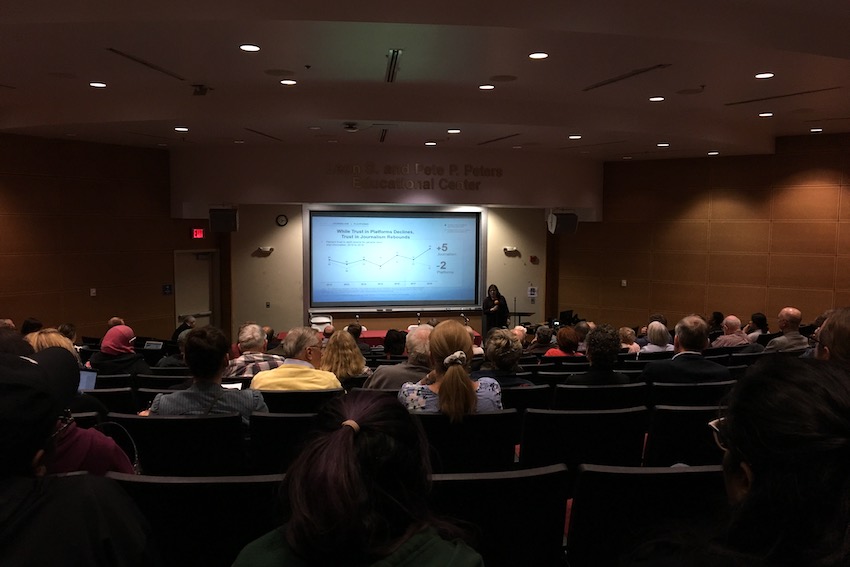
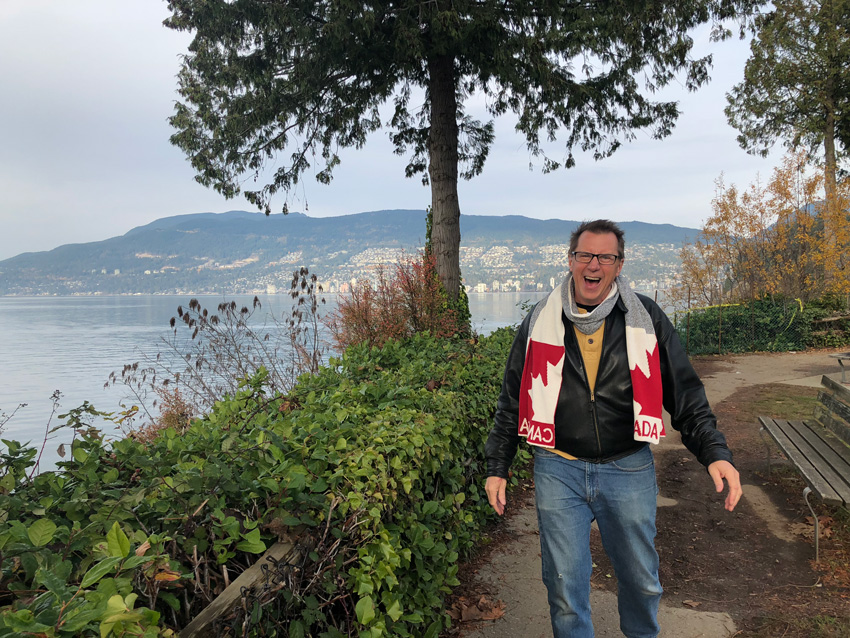
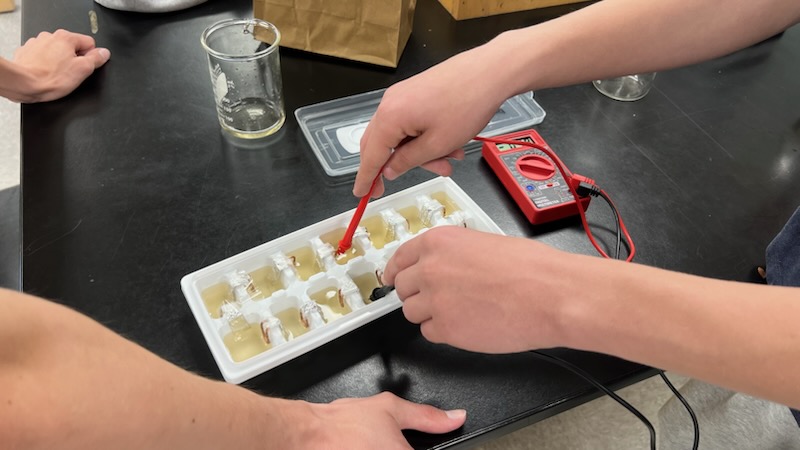
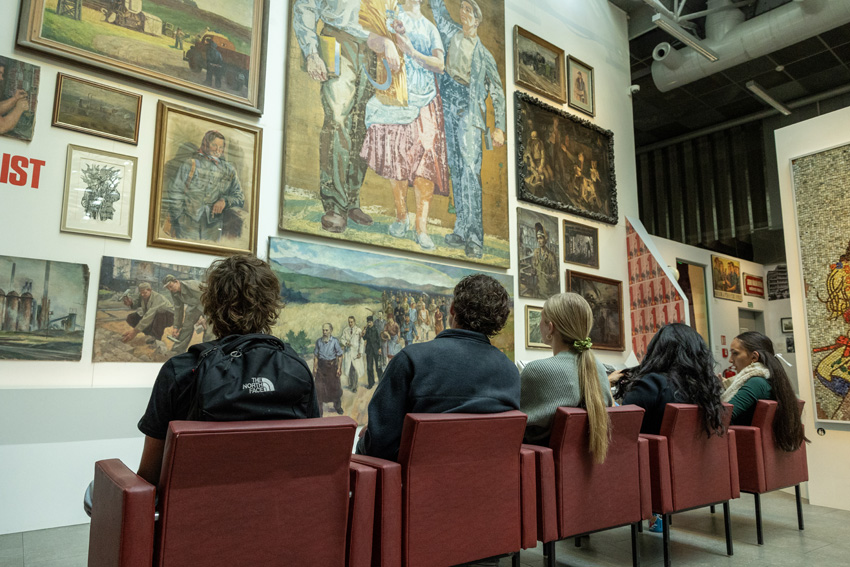
Addison • Apr 20, 2019 at 11:53 am
Great article! This was such a great event!